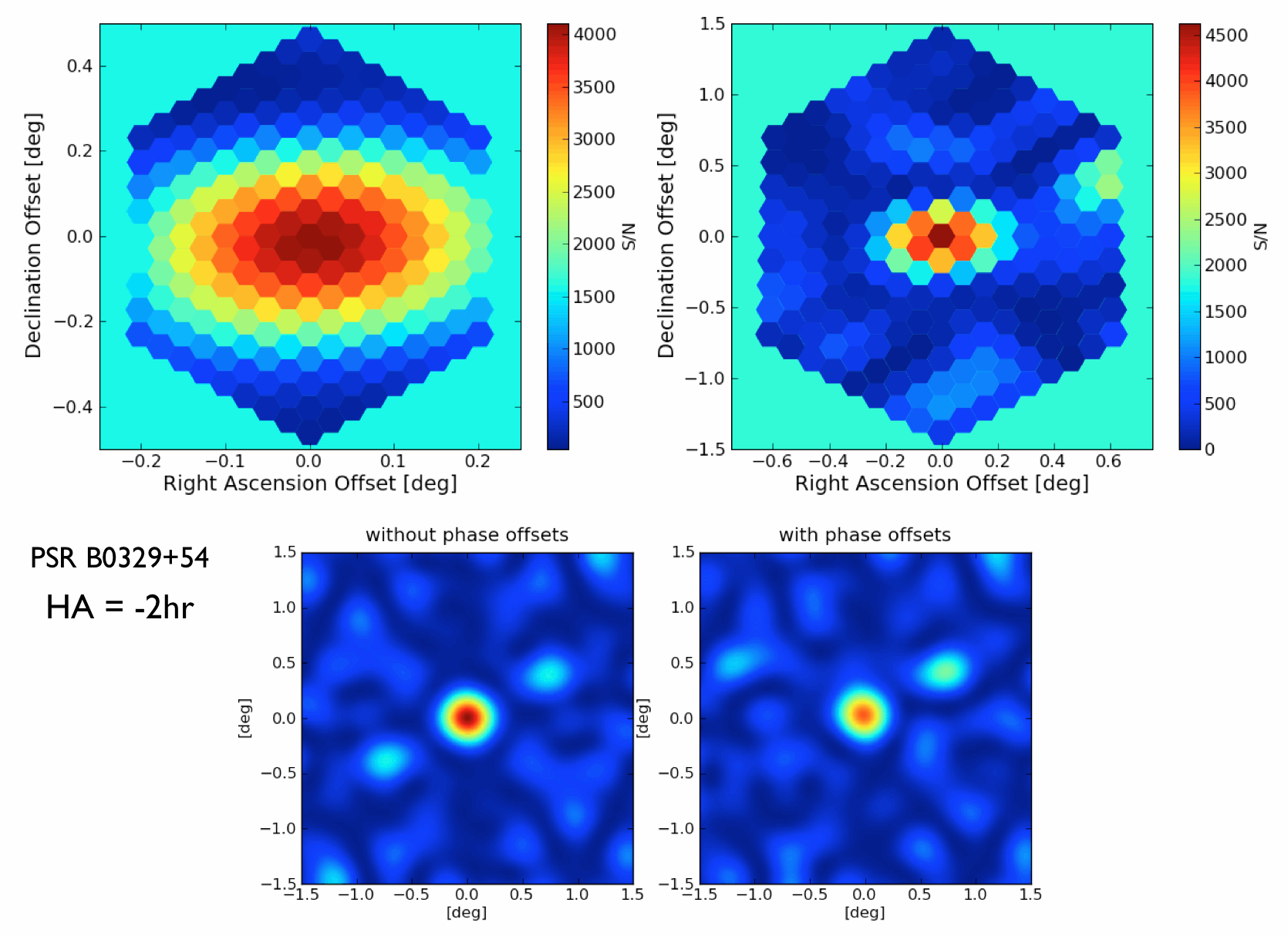Daily Image
29-05-2012Time for a Tune-Up
| Submitter: | Jason Hessels, Olaf Wucknitz, and Ben Stappers on behalf of the LOFAR PWG |
| Description: | Coherently combining the LOFAR Superterp into a `tied-array' beam provides a sensitive means to observe pulsars and other rapidly varying objects. Using the Superterp as a single station also has interesting applications for long-baseline imaging. Although we've known for a while that the phasing of the Superterp is good, but not perfect, we have never quantified the performance by mapping the beam. Until now... The top two plots show a zoomed-in (left) and zoomed-out (right) view of the Superterp beam respectively. These were made by simultaneously recording 217 coherent and 1 incoherent beam for all 12 Superterp High-Band Antenna (HBA) sub-stations. In each beam map, the bright pulsar B0329+54 was observed for 5 minutes and the color maps reflect the signal-to-noise ratio of the dedispersed and folded signal in various directions. The background color (aqua) reflects the signal-to-noise ratio of the simultaneously acquired incoherent beam. The two lower plots show the expected beam shape based on a model that takes into account the positions of the HBA sub-stations and their size. Alhough the observed beam pattern generally agrees well with what one would expect, there is an obvious asymmetry in the brightness of the sidelobes. Re-running the beam simulations with the known phase offsets between the stations we are able to qualitatively reproduce this asymmetry. Obviously the next step is to calibrate out these remaining delays. That work is currently underway as part of the broader effort to extend the single clock system to all Superterp stations. |
| Copyright: | Hessels/Wucknitz |
| Tweet |  |
